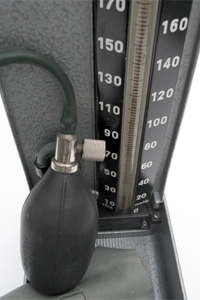Inflammation-Induced Nitric Oxide Synthase May Mediate the Acute Hypotensive Effect of ST36 Stimulation
Kristen Sparrow • March 16, 2025

 It’s difficult for me to put this together with other findings on the stimulation of St 36. In the Nature paper, they found that different frequencies of stimulation produced either vagal increase, or sympathetic increase. So this manual stimulation in animals led to a sympathetic increase and an increase in nitric oxide which lead to a decrease in blood pressure even though sympathetic tone increased. So I don’t get it, but I certainly want to file this away under the autonomic effects of St36.
It’s difficult for me to put this together with other findings on the stimulation of St 36. In the Nature paper, they found that different frequencies of stimulation produced either vagal increase, or sympathetic increase. So this manual stimulation in animals led to a sympathetic increase and an increase in nitric oxide which lead to a decrease in blood pressure even though sympathetic tone increased. So I don’t get it, but I certainly want to file this away under the autonomic effects of St36.
Abstract
Purpose: Acupoint Zusanli (ST36) has been shown to reduce blood pressure, but the underlying mechanism remains unknown. This study aimed to characterize the effects of manual acupuncture (MA) at ST36 on BP and its associated mechanisms in anesthetized rats.
Methods: The cardiovascular response to MA at ST36 in Sprague-Dawley rats was measured by electrocardiogram, hemodynamic methods, heart rate variability, echocardiography, laser speckle contrast imaging, and Western blotting. RNA sequencing was employed for mechanistic investigation, and validation was performed through blood enzyme-linked immunosorbent assay and pharmacologic inhibition.
Results: Stimulation of ST36 increased peripheral blood flow while decreasing the velocity time integral of the femoral artery and cardiac stroke volume. This stimulation induced transient hypotension, accompanied by a decreased heart rate and reduced cardiac contractility, thereby exerting negative chronotropic and inotropic effects on the heart. Furthermore, the increased low-/high-frequency ratio after ST36 stimulation, along with the upregulation of phosphorylated tyrosine hydroxylase, indicated sympathetic activation. RNA sequencing at the local acupoint revealed enrichment of inflammation-related pathways following ST36 stimulation, which was corroborated by elevated tumor necrosis factor-alpha (TNF-α) levels in the serum. Notably, the nitric oxide synthase (NOS) inhibitor L-NG-Nitro arginine methyl ester (L-NAME) effectively suppressed the induced hypotension.
Conclusion: These results indicated that MA at ST36 induced inflammation, which activated NOS and resulted in the release of nitric oxide. This led to the vasodilation of peripheral vessels and transient hypotension.

